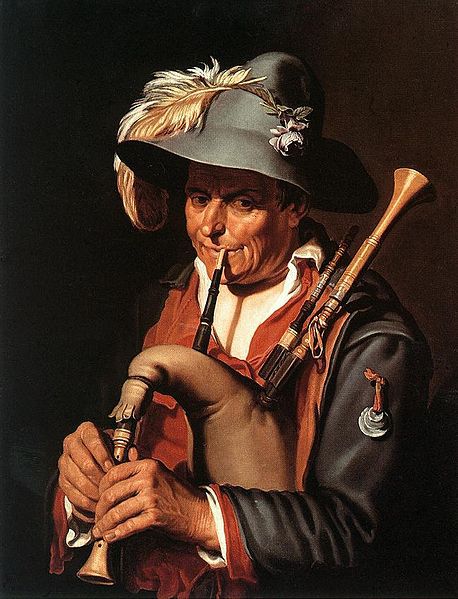 Honeybees are reputed to be the messengers of the Gods. On the death of their bee-master (beekeeper) the honeybees must be told. It is thought that the honeybees on being told of their master’s death, would fly to the spirit-lands and tell them of his impending arrival. Mr Woodley explains this tradition:
Honeybees are reputed to be the messengers of the Gods. On the death of their bee-master (beekeeper) the honeybees must be told. It is thought that the honeybees on being told of their master’s death, would fly to the spirit-lands and tell them of his impending arrival. Mr Woodley explains this tradition:
“On the death of the owner each hive was adorned with a bit of crape, and notified of its loss by some member of the family tapping it while repeating the words,
“Wake, little brownies, wake. Your master’s dead another you must take.” [British Bee Journal 1907]
Ten years prior to the start of the First World War something strange was happening to the honeybees on the Isle of Wight. This reader of the British Bee Journal in 1904 explains:-
“My young bees hatching out freely, after loitering on the floor-board, have been falling off in great numbers, and dying on the ground, all unable to fly. All hives were very strong, and well supplied with food and syrup, till they received a check during May 16-21. They have sheets of brood coming on, but food seems scarce, and all hives are dull and listless, and do not seem to care for syrup as before. Yet there are multitudes of bees, and they require room in supers, where work seems slowly beginning. The wind has been persistently north-east, with sunshine on most days. For twelve years past I have never noticed this trouble before. Until this winter they were all on grass; but I have arranged a cinder floor instead this year. Can this have anything to do with it?
— R. L. M., Isle of Wight, June 11.”
[British Bee Journal 1904]
If each honeybee that died from this disease represented soldier of the First World War, maybe we could conclude that an omen was being shown via the honeybees?
The Isle of Wight has a long history of strange occurrences and Gary Biltcliff describes the island:-
“Although the island is famous for its sandy beaches, holiday camps and music festivals, it has gained a reputation amongst writers as ‘Britain’s Magical Island’, because of its long history of paranormal events that include ghostly encounters, time-slips, occult practices and its legendary association with the mysterious Druids.”
[http://www.waking-the-dragon.co.uk/art/earth/biltcliff/biltcliff.html]
With this in mind maybe we shouldn’t be surprised that the Isle of Wight was the origin of this disease.
 Map of the Isle of Wight showing the progress of the ‘Isle of Wight Disease’
Map of the Isle of Wight showing the progress of the ‘Isle of Wight Disease’
From 1904 to 1908 the disease, which became known as the ‘Isle of Wight Disease’, was contained within the Island. Virtually all honeybees on the Isle of Wight perished. It seems uncanny that this period of time (1904-1908) pre-dates the period of the First World War (1914-1918) by ten years.
The opportunity either to heed the honeybees’ omen or to contain the disease within the Isle of Wight was lost. By 1909 the march to war was becoming obvious as an arms race between Britain and Germany was taking place. At the same time the honeybee carnage stepped up a gear.
 By 1909 the disease had crossed to the mainland and spread through Hampshire, Dorset and Sussex and it spread rapidly across Britain. Charles Heap writing in 1912 describes the impact of the Isle of Wight Disease:
By 1909 the disease had crossed to the mainland and spread through Hampshire, Dorset and Sussex and it spread rapidly across Britain. Charles Heap writing in 1912 describes the impact of the Isle of Wight Disease:
“During the past two months I have seen a great deal of disease. In Berkshire “Isle of Wight disease” continues to spread, and I regret to say that it is beginning to sweep through the Midland Counties. People will not, however, believe that the disease is in their midst until they see the bees dying by hundreds. In a great many stocks the disease is slowly but surely developing, and next spring, if not sooner, their unsuspecting owners will find unmistakable evidence of its ravages. In an apiary of seven stocks which came under my observation a year ago only one stock appeared to be infected. That was dosed regularly with a so-called remedy from August until well into November, but last spring that stock and the other six were found to be suffering from the disease. Two survived and gave a surplus, but both, in spite of the application of another “remedy,” will probably not survive the winter, although they have ample stores. It is sad as one goes about to find that apiaries that have been in existence fifty, sixty, and even a hundred years have lost all their hard-working occupants through this fell disease.”
[British Bee Journal 1912]
The consequence of the loss of honeybees was to become apparent beyond the world of beekeeping, Charles Heap writing in 1914 describes the situation in his district:-
“Speaking generally, the acquisition of large quantities of honey is the prime interest of the bee-keeper; but the bee does much more important work than gathering honey. Its chief purpose is to effect the cross-fertilisation of flowers; indeed, some plants cannot reproduce their kind without the ministrations of insects, of which, in this respect, the honey-bee is the most important. I visited certain parts of Worcestershire and Berkshire last autumn, and I was able quite easily, especially in the latter county, to tell from the appearance of the orchards and the fruit trees in village gardens where bees were scarce. In some districts where all the honey bees were dead, there was scarcely an apple on the trees, while in other places having similar climatic and soil conditions the crops were good, owing to the presence of bees. To take another instance, in the garden of a large house situated high upon a beautiful eminence overlooking the Thames, it was impossible to grow strawberries until two or three years ago, when a fresh gardener arrived with a few stocks of bees of his own. “
[British Bee Journal 1912]
 William Woodley writes in 1915 to his landlord regarding this ‘bee garden’ in Stanmore, a hamlet of Beedon.
William Woodley writes in 1915 to his landlord regarding this ‘bee garden’ in Stanmore, a hamlet of Beedon.
Beedon, Newbury
March 23 1915
Dear Sir,
I hereby give notice that I shall give up the tenancy of my Bee Garden “No Forty” situate at Stanmore at Michaelmas next.
I am Dear Sir,
Yours faithfully
W. Woodley
P.S. I am sorry to give up the garden but all my bees have died with the Isle of Wight Disease at Stanmore and nearly all my stock at Worlds End. I don’t think there is a stock alive in Beedon parish. I trust you are keeping well. Yours faithfully W.W.
The Isle of Wight Disease destroyed a very large proportion of the honeybee stocks in Britain. The loss of honey and indeed its impact on the food production came at a time Britain was facing wartime food shortages as its merchant fleet was experiencing losses. Beekeeping could not assist with the war effort in terms of offering an alternative to sugar.
Mike Soper describes the situation in Britain regarding sugar:
“1917 was the worst year as far as food supplies were concerned, with sugar the commodity in shortest supply, and other foods tightly rationed…when there was reputedly only ten days supply of sugar left in the country.”
[Soper, M., 1995, ’Years of Change’, Farming Press Books]
Beekeeping in Britain took generations to recover from the Isle of Wight Disease and many beekeepers put down their smokers for good as a result. It was thought the ‘black’ honeybee, which was a native honeybee, had become extinct. In 1922, Dr Rennie concluded that the Isle of Wight Disease was caused by the acarine mite. In later years, it was believed by scientists such as Dr L Bailey, that the Isle of Wight Disease was cause by Chronic Bee Paralysis virus.
I think we will never truly know what caused the Isle of Wight Disease. Still, we should not forget that honeybees are the messengers of the spirit-lands and their wellbeing will foretell our future.
Advertisements please share this :)





